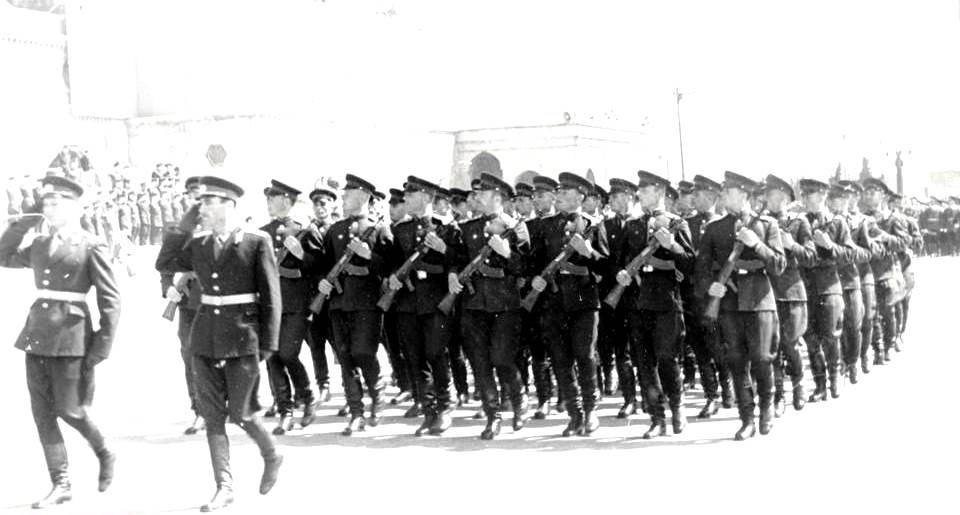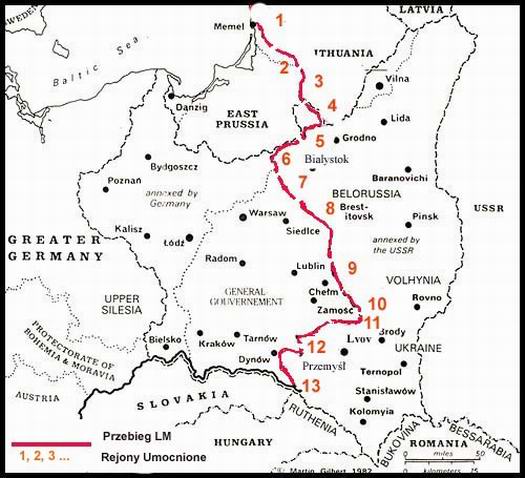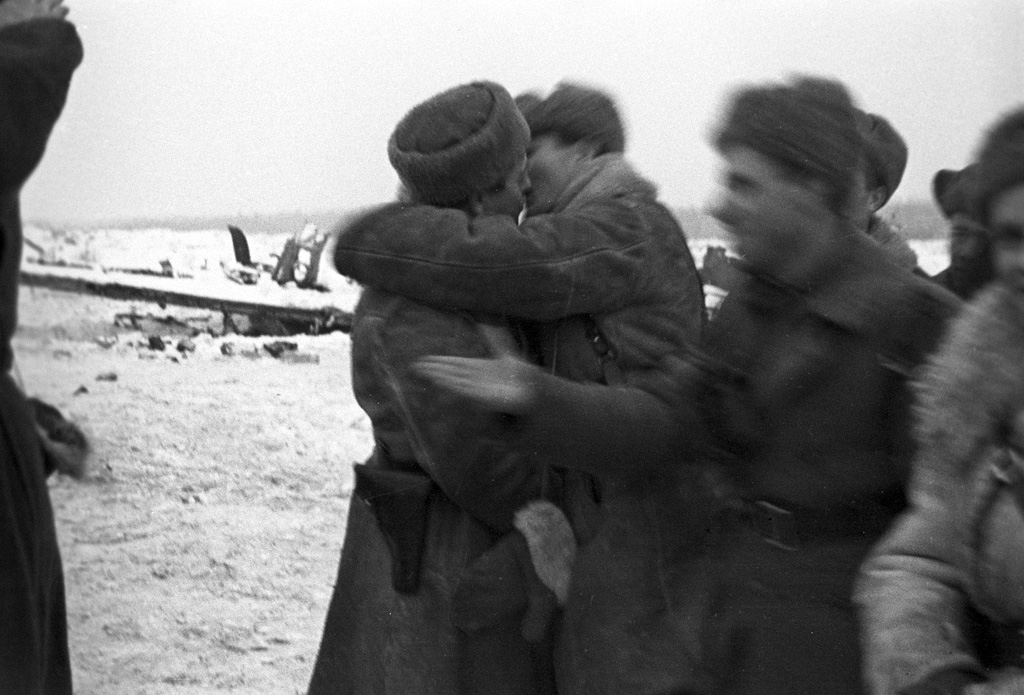|
Volkhov Front
The Volkhov Front (russian: Волховский фронт) was a major formation of the Red Army during the first period of the Second World War. It was formed as an expediency of an early attempt to halt the advance of the Wehrmacht Army Group North in its offensive thrust towards Leningrad. Initially the front operated to the south of Leningrad, with its flank on Lake Ladoga. First formation The Volkhov Front was formed on 17 December 1941 from the left wing of the Leningrad Front and elements of the Reserve of the Supreme High Command (''Stavka'' Reserve) during the conduct of the Tikhvin Offensive operation under the command of the Army General Kirill Meretskov, with General Grigory Stelmakh (former commander of the 4th Army) as Chief of Staff and Army Commissar of 1st rank A.I.Zaporozhets.Meretskov, On the service of the nation, Ch.6 Initially Sokolov's 26th Army (later 2nd Shock Army) and Galanin's 59th Armies were allocated to the Front's formation. The Front al ... [...More Info...] [...Related Items...] OR: [Wikipedia] [Google] [Baidu] |
Red Army Flag
Red is the color at the long wavelength end of the visible spectrum of light, next to orange and opposite violet. It has a dominant wavelength of approximately 625–740 nanometres. It is a primary color in the RGB color model and a secondary color (made from magenta and yellow) in the CMYK color model, and is the complementary color of cyan. Reds range from the brilliant yellow-tinged scarlet and vermillion to bluish-red crimson, and vary in shade from the pale red pink to the dark red burgundy. Red pigment made from ochre was one of the first colors used in prehistoric art. The Ancient Egyptians and Mayans colored their faces red in ceremonies; Roman generals had their bodies colored red to celebrate victories. It was also an important color in China, where it was used to color early pottery and later the gates and walls of palaces. In the Renaissance, the brilliant red costumes for the nobility and wealthy were dyed with kermes and cochineal. The 19th century brou ... [...More Info...] [...Related Items...] OR: [Wikipedia] [Google] [Baidu] |
4th Army (Soviet Union)
The 4th Army was a Soviet field army of World War II that served on the Eastern front of World War II and in the Caucasus during the Cold War. It was disbanded after the fall of the Soviet Union, with its divisions being withdrawn to Russia and disbanded. World War II First Formation The Fourth Army was created in August 1939 in the Belorussian Special Military District from the Bobruisk Army Group as an independent army. In September 1939, the Fourth Army took part in the Soviet invasion of Poland commanded by the future Marshal of Soviet Union V.I. Chuykov, the defender of Stalingrad. Its order of battle in that operation is listed here. Elements of the army, apparently 4th Battalion, 29th Light Tank Brigade, took part in the German–Soviet military parade in Brest-Litovsk on September 22, 1939. When the German invasion of the Soviet Union commenced on 22 June 1941, the Army was part of the Western Front and had the 28th Rifle Corps ( 6th Rifle Division and 42nd Rifle Di ... [...More Info...] [...Related Items...] OR: [Wikipedia] [Google] [Baidu] |
54th Army (Soviet Union)
The Red Army's 54th Army was a Soviet field army during the Second World War. It was first formed in the Leningrad Military District in August, 1941, and continued in service in the northern sector of the Soviet-German front until the end of 1944. It spent much of the war attempting to break the German siege of Leningrad, in which it helped to achieve partial success in January, 1943, and complete success one year later. During these operations the soldiers of the 54th served under five different commanders, most notably Col. Gen. Ivan Fedyuninsky in the winter of 1941–42. After helping to drive Army Group North away from Leningrad and into the Baltic states in the first nine months of 1944, the army was deemed surplus to requirements on the narrowing front, and was officially disbanded on the last day of the year. Formation The 54th Army was first formed in August, 1941, in the Leningrad Military District, to the east of the city in the vicinity of the town of Volkhov. Its fir ... [...More Info...] [...Related Items...] OR: [Wikipedia] [Google] [Baidu] |
8th Army (Soviet Union)
The 8th Army was a field army of the Soviet Red Army during the Second World War. Winter War The 8th Army was formed in October 1939 (or 14 September 1939) from the Novgorod Army Operational Group of the Leningrad Military District with the task of providing security of the Northwestern borders of the USSR. (The Novgorod Group had been created a month before, on 13 August 1939 by the order No. 0129 of the Chairman of the People's Commissariat for Defence, Marshal of the Soviet Union K.E. Voroshilov. The Group was created for operations in Estonia and Latvia.) On 30 November 1939 the Soviet Union attacked Finland in the Winter War. The strength of the 8th Army, or overall the Red Army, in the north of Lake Ladoga (Ladoga Karelia), surprised the Finnish general staff. The Finns deployed only two divisions, and they had a support group of three brigades, bringing their total strength to over 30,000 uniforms. The Soviets had a division for almost all roads leading west ... [...More Info...] [...Related Items...] OR: [Wikipedia] [Google] [Baidu] |
Zhuravlev
Zhuravlyov (russian: Журавлёв) is a Russian surname derived from '' журавль'', the Russian word for '' crane''. It may refer to: * Alexander Zhuravlyov (born 1965), Russian military officer * Aleksey Zhuravlyov (born 1980), Russian footballer * Aleksey Zhuravlyov (born 1962), Russian politician * Boris Zhuravlyov (born 1946), Russian footballer * Konstantin Zhuravlyov (born 1976), Uzbekistani sprinter * Nikita Zhuravlyov (born 1994), Russian footballer * Oleksandr Zhuravlyov (born 1945), Soviet footballer * Pavel Zhuravlyov (1887–1920), Russian partisan * Pavlo Zhuravlyov (born 1983), Ukrainian kickboxer and boxer * Sergei Zhuravlyov (1892–1937), Soviet Arctic explorer and surveyor * Sergei Zhuravlyov (born 1976), Russian footballer * Serhiy Zhuravlyov (born 1959), Ukrainian footballer * Vsevolod Zhuravlyov (born 1978), Russian footballer * Yegor Zhuravlyov (born 1990), Russian ice hockey player * Yevgeny Zhuravlyov (1896-1983), Soviet lieutenant-gener ... [...More Info...] [...Related Items...] OR: [Wikipedia] [Google] [Baidu] |
14th Air Army (Soviet Union)
The 14th Air Army was an air army of the Soviet Air Forces during World War II and the Cold War and of the Ukrainian Air Force in the early Post-Soviet period. Soviet period The Army was first formed from the Air Forces of the Volkhov Front in June 1942, and in 1943 participated in the Novgorod-Luga operation. In February 1944 it was dispersed, with the command staff assigned to the Reserve of the Supreme High Command (RVGK) and its units to other air armies. Reformed in April 1944, when it served with the 3rd Baltic Front, it was again dispersed in November 1944, with its staff again been allocated to the Stavka Reserve and its units to other formations. It was active on 1 May 1945 with the 107th Air Signals Regiment and the 30th Air Regiment of the Civil Air Fleet ( Aeroflot), as part of the RVGK. However it became the 57th Air Army on 10 January 1949. 57th Air Army was included in 1964 Warsaw Pact war planning, being planned to be moved forward from the Carpathian Military ... [...More Info...] [...Related Items...] OR: [Wikipedia] [Google] [Baidu] |
Air Support
In military tactics, close air support (CAS) is defined as air action such as air strikes by fixed or rotary-winged aircraft against hostile targets near friendly forces and require detailed integration of each air mission with fire and movement of these forces and attacks with aerial bombs, glide bombs, missiles, rockets, autocannons, machine guns, and even directed-energy weapons such as lasers.''Close Air Support''. United States Department of Defense, 2014. The requirement for detailed integration because of proximity, fires or movement is the determining factor. CAS may need to be conducted during shaping operations with Special Operations Forces (SOF) if the mission requires detailed integration with the fire and movement of those forces. A closely related subset of air interdiction (AI), battlefield air interdiction, denotes interdiction against units with near-term effects on friendly units, but which does not require integration with friendly troop movements. The term " ... [...More Info...] [...Related Items...] OR: [Wikipedia] [Google] [Baidu] |
52nd Army (Soviet Union)
The 52nd Army was a field army of the Red Army of the Soviet Union in World War II, formed twice. History It was created on 25 August 1941 from the headquarters of the 25th Rifle Corps and defended north of Novgorod. On 26 September 1941, the 52nd Army headquarters was used to form the 4th Army (II Formation). The 52nd Army headquarters was reestablished on 28 September 1941. In May 1943, the army was moved to control of the Reserve of the Supreme High Command (''Stavka'' Reserve). ''Stavka'' released the 52nd Army to subordination of the Steppe Front in July 1943, and the 52nd Army thereafter fought in Ukraine, southern Poland, southeastern Germany, and finally in northern Czechoslovakia. The army took part in the following operations: :1941 ::Tikhvin Defensive Operation :1942 ::Tikhvin Offensive ::Lyuban Offensive Operation :1943 ::Chernigov-Poltava Offensive ::Cherkassy Offensive :1944 ::Kirovograd Offensive :: Korsun–Shevchenkovsky Offensive :: Uman–Botoșani Offensi ... [...More Info...] [...Related Items...] OR: [Wikipedia] [Google] [Baidu] |
Nikolai Klykov
Nikolai or Nikolay is an East Slavic variant of the masculine name Nicholas. It may refer to: People Royalty * Nicholas I of Russia (1796–1855), or Nikolay I, Emperor of Russia from 1825 until 1855 * Nicholas II of Russia (1868–1918), or Nikolay II, last Emperor of Russia, from 1894 until 1917 * Prince Nikolai of Denmark (born 1999) Other people Nikolai * Nikolai Aleksandrovich (other) or Nikolay Aleksandrovich, several people * Nikolai Antropov (born 1980), Kazakh former ice hockey winger * Nikolai Berdyaev (1874-1948), Russian religious and political philosopher * Nikolai Bogomolov (born 1991), Russian professional ice hockey defenceman * Nikolai Bukharin (1888–1938), Bolshevik revolutionary and Soviet politician * Nikolai Bulganin (1895-1975), Soviet politician and minister of defence * Nikolai Chernykh (1931-2004), Russian astronomer * Nikolai Dudorov (1906–1977), Soviet politician * Nikolai Dzhumagaliev (born 1952), Soviet serial killer * Nikolai Goc ... [...More Info...] [...Related Items...] OR: [Wikipedia] [Google] [Baidu] |
59th Army (Soviet Union)
The 59th Army was a field army of the Soviet Union's Red Army. It was formed in November 1941 in the Siberian Military District. It was soon redeployed to the Arkhangelsk Military District and by December was part of the Volkhov Front. From January to April 1942, it fought in the Lyuban offensive operation, an unsuccessful attempt to relieve Leningrad. For the next two years, the army defended its bridgehead on the Volkhov River. During spring 1944, it fought in the Leningrad–Novgorod offensive, which broke the siege of Leningrad. During the summer of 1944, the army fought in the Vyborg–Petrozavodsk offensive, helping to end the Continuation War. In December, the army transferred to the Sandomierz bridgehead, from which it launched the Vistula–Oder offensive in January 1945. At the end of January, the army crossed the Oder and then fought in the Lower Silesian offensive and the Upper Silesian offensive. By late March it was in the Sudetes. In May 1945, the army launched ... [...More Info...] [...Related Items...] OR: [Wikipedia] [Google] [Baidu] |
Ivan Galanin
Ivan Vasilievich Galanin (; –12 November 1958) was a Red Army lieutenant general during World War II. Galanin was drafted into the Red Army in 1919 and fought as an ordinary soldier in the Russian Civil War. He became an officer during the interwar period and graduated from the Frunze Military Academy. Galanin then served in several staff positions in the Transbaikal Military District and commanded the 57th Rifle Division during the Battles of Khalkhin Gol in 1939. He was promoted to command the 17th Rifle Corps in Ukraine in 1940, and held that position when Operation Barbarossa, the German invasion of the Soviet Union, began. After leading the corps in the Battle of Uman and the retreat east through Ukraine, he took command of the 12th Army and then the 59th Army. From August 1942 he was deputy command of the Voronezh Front, and in October he took command of the 24th Army, which he led in Operation Uranus. After leading the 70th Army in the Battle of Kursk, Galanin became ... [...More Info...] [...Related Items...] OR: [Wikipedia] [Google] [Baidu] |
2nd Shock Army
The 2nd Shock Army (russian: 2-я Ударная армия) was a field army of the Soviet Union during the Second World War. This type of formation was created in accordance with prewar doctrine that called for Shock Armies to ''overcome difficult defensive dispositions in order to create a tactical penetration of sufficient breadth and depth to permit the commitment of mobile formations for deeper exploitation.'' However, as the war went on, Shock Armies lost this specific role and reverted, in general, to ordinary frontline formations. Formation The 2nd Shock Army was formed from the Volkhov Front's 26th Army in December 1941 and initially consisted of the 327th Rifle Division and eight separate rifle brigades. During the Lyuban offensive operation in early 1942, the 2nd Shock Army broke through German lines, was cut off from reinforcement along the Volkhov River by a German counter-attack, and was not permitted to retreat. When the order for retreat finally came in, the 2nd ... [...More Info...] [...Related Items...] OR: [Wikipedia] [Google] [Baidu] |





